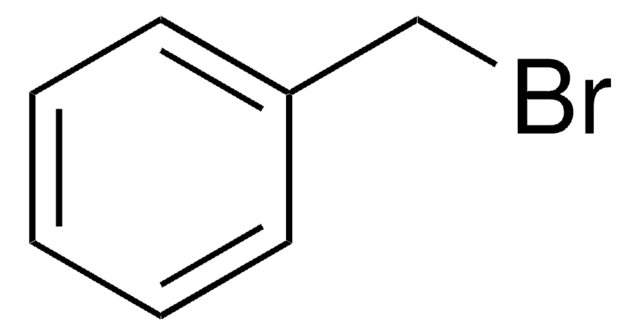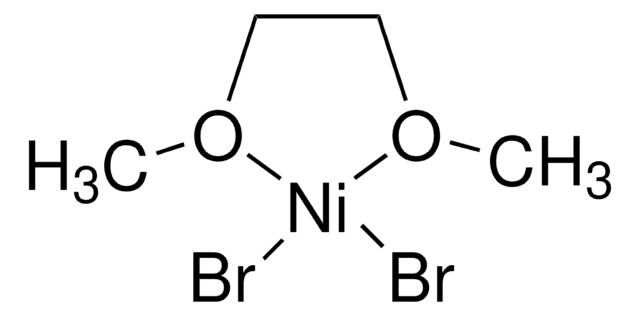209988
Zinc
dust, <10 μm, ≥98%
Sinonimo/i:
Zn
Autenticatiper visualizzare i prezzi riservati alla tua organizzazione & contrattuali
About This Item
Formula empirica (notazione di Hill):
Zn
Numero CAS:
Peso molecolare:
65.39
Numero MDL:
Codice UNSPSC:
11101719
ID PubChem:
NACRES:
NA.22
Prodotti consigliati
Tensione di vapore
1 mmHg ( 487 °C)
Livello qualitativo
Saggio
≥98%
Stato
dust
Impiego in reazioni chimiche
core: zinc
reagent type: catalyst
Resistività
5.8 μΩ-cm, 20°C
Dimensione particelle
<10 μm
P. ebollizione
907 °C (lit.)
Punto di fusione
420 °C (lit.)
Densità
7.133 g/mL at 25 °C (lit.)
Stringa SMILE
[Zn]
InChI
1S/Zn
HCHKCACWOHOZIP-UHFFFAOYSA-N
Descrizione generale
Zinc is an inexpensive, readily available versatile reagent in organic reactions and is commonly used as a reducing agent in organic synthesis. Zinc dust is used to reduce carbonyls, carbon-halide bonds, carbon-oxygen bonds, alkynes, and heteroatom bonds such as N-N and N-O bonds. It is also used to prepare various organozinc reagents. Additionally, Zinc has been used in several well-known named reactions, like the Reformatsky reaction, the Knorr pyrrole synthesis, the Serini reaction, and the Simmons-Smith cyclopropanation.
Applicazioni
Reducing agent; used for preparation of organozinc reagents, Reformatsky reagents, and the Simmons-Smith reagent (cyclopropanation).
Zinc is also used as a:
Zinc is also used as a:
- Reductant in the hydrothermal CO2 reduction to formic acid in batch reactors.
- Catalyst in the synthesis of propargylamines by one pot, three component coupling of aldehydes, amines and alkynes in acetonitrile.
Avvertenze
Warning
Indicazioni di pericolo
Consigli di prudenza
Classi di pericolo
Aquatic Acute 1 - Aquatic Chronic 1
Codice della classe di stoccaggio
11 - Combustible Solids
Classe di pericolosità dell'acqua (WGK)
WGK 2
Punto d’infiammabilità (°F)
Not applicable
Punto d’infiammabilità (°C)
Not applicable
Dispositivi di protezione individuale
Eyeshields, Gloves
Scegli una delle versioni più recenti:
Possiedi già questo prodotto?
I documenti relativi ai prodotti acquistati recentemente sono disponibili nell’Archivio dei documenti.
I clienti hanno visto anche
Nicholas A Isley et al.
Green chemistry : an international journal and green chemistry resource : GC, 2015, 307-307 (2014-12-23)
Alkyl bromides and chlorides can be reduced to the corresponding hydrocarbons utilizing zinc in the presence of an amine additive. The process takes place in water at ambient temperatures, enabled by a commercially available designer surfactant. The reaction medium can
Activated zinc dust
Smith CR
Synlett, 2009(09), 1522-1523 (2009)
Knochel, P.
Chemical Reviews, 93, 217-217 (1993)
Sara Eyal et al.
Journal of nuclear medicine : official publication, Society of Nuclear Medicine, 50(5), 798-806 (2009-05-01)
Studies in rodents indicate that the disruption of P-glycoprotein (P-gp) function increases drug distribution into the developing fetus and organs such as the brain. To simultaneously and serially evaluate the effect of P-gp activity and inhibition on the tissue distribution
A viewpoint about the treatment of Wilson's disease.
Abdul Qayyum Rana et al.
The Canadian journal of neurological sciences. Le journal canadien des sciences neurologiques, 40(4), 612-614 (2013-06-22)
Global Trade Item Number
| SKU | GTIN |
|---|---|
| 209988-1KG | 4061838771001 |
| 209988-5KG | 4061838771018 |
| 209988-100G | 4061838770998 |
Il team dei nostri ricercatori vanta grande esperienza in tutte le aree della ricerca quali Life Science, scienza dei materiali, sintesi chimica, cromatografia, discipline analitiche, ecc..
Contatta l'Assistenza Tecnica.



